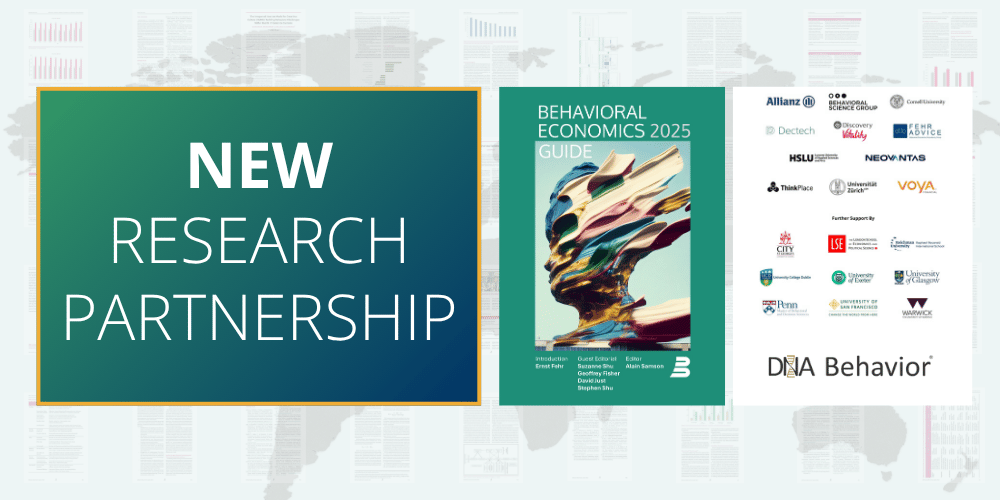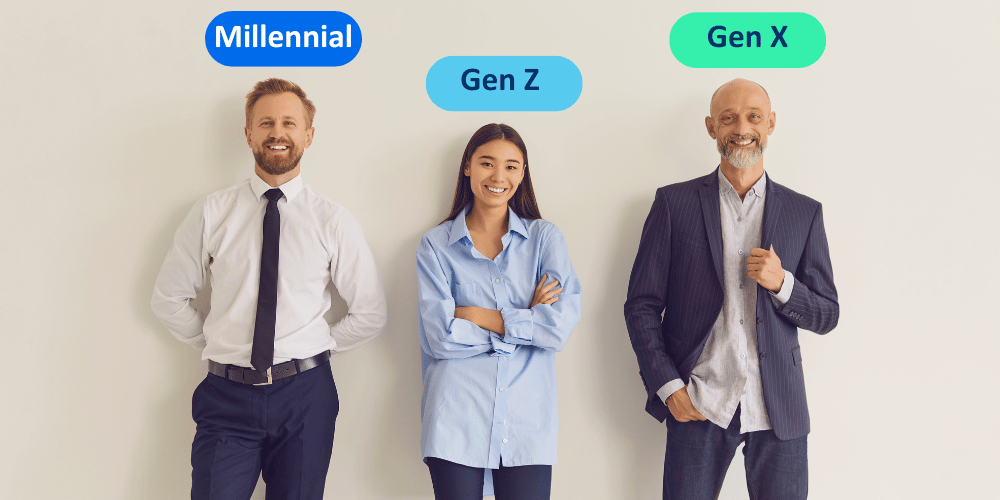Mapping Gender, Race, and Behavior
Every human being has a unique set of strengths that guide their life and work. We decided to find out if gender and background play a role.
Our purpose-driven software and behavioral experts work together to meet your business needs best.
Our app lets you toggle between insights most relevant to the employee or client experience.
Key behavioral insights can be integrated into your favorite web tools and custom applications.
Our behavioral experts can help you get the most out of our technology through training programs, customized workshops, and more.
Register for one of our online events to get focused guidance on the practical uses of our platform and have your questions answered.
Learn how we use psychometric measurement to accurately predict a person’s personality traits for identifying their behavioral style and money attitudes.
Reinforce your understanding of how BeSci Tech can create a life-changing shift in the way people think, make decisions, run their businesses, and relate to others.
Get a little background on our business and take a peek at the behavioral style reports of our team members!
Got questions? We're available by phone, email, or chat to discuss any of our behavioral solutions.
4 min read
 Hugh Massie
:
June 30, 2025
Hugh Massie
:
June 30, 2025

Imagine this: A young professional reviewing her finances. She knows she needs to start saving, possibly by opening an investment account or contributing more to her 401(k). But she freezes. There are too many choices and too much jargon. She closes the app and promises to try again next week.
Now, imagine a consumer walks into a grocery store determined to eat healthier. She grabs a bag of granola labeled "natural," a gluten-free cookie, and a sugar-laden smoothie branded with the word "clean." She checks out, feeling satisfied. The products align with her goals... at least according to the packaging.
These are not stories about ignorance. They are stories about behavior and how even our best intentions get tripped up by the environments we live in and make choices.
The Behavioral Economics Guide 2025 shines a light on this reality. It was developed by global experts and backed by DNA Behavior to explore innovations and collective insights in the field of Behavioral Economics. The guide includes contributions from industry leaders such as Allianz and Voya, as well as from top universities like Cornell University, the University of Glasgow, and the University of Pennsylvania.
To better understand how we bridge the gap between intention and action, we have gathered some of the most powerful insights driving our work. These snippets reflect the real-world impact of behaviorally intelligent design and how it is already transforming industries from the inside out.
At the heart of this year's editorial is a deceptively simple insight: goals often do not match people's behavior.
We want to eat well, save more, and plan for the future. But we often:
These contradictions stem from misaligned goals—a core concept that the authors unpack. We often have clear intentions (like "get healthy" or "save money") but unclear or misleading pathways to get there.
The rise of products labeled as "natural," "clean," or "low-carb" plays into this. These terms suggest health but often mask high sugar, low nutrition, or unsustainable sourcing. In finance, similar patterns emerge: products that seem convenient or smart may hide fees or promote short-term thinking.
Behavioral economics explains why this happens. People rely on mental shortcuts. We are influenced by labels, defaults, and emotions. And without clear feedback, we keep making the same errors, especially when environments are more designed for profit than empowerment.
Traditional economics often focuses on outcomes: what people choose. But behavioral science goes deeper. Thanks to tools like eye-tracking, click-stream analysis, and process tracing, researchers can now study how people decide.
This matters because choices do not happen in a vacuum. They unfold over moments: the glance that lingers on a label, the screen a user hesitates on, the point at which a financial form is abandoned.
By understanding these patterns, we can design interventions that:
In other words, we move from assumptions to evidence and from blunt tools to precise behavioral design.
A powerful theme in this editorial is the need to tailor interventions. While default options and smart prompts have helped millions, they can fall short when they ignore personal context.
Let us return to our earlier examples:
The takeaway? Behavioral interventions must reflect diversity, not just in demographics, but in goals, constraints, and lived experience. That is where data, empathy, and adaptive systems become game-changers.
While academic experiments offer clean insights, the real world is messy. That is why the editorial emphasizes implementation challenges—the gap between what works in theory and what survives in practice.
Behavioral interventions often fail to scale because:
For example, a health prompt might work in a lab but get ignored in an actual clinic. A savings nudge might boost enrollment, but without reminders and trust, savings stagnate.
To close this gap, behavioral science must integrate into system design, working alongside product developers, public health leaders, and financial institutions, not just advising from the sidelines.
The editorial takes a focused look at health and finance, and rightly so. These are domains where bad decisions can snowball and where better design can change lives.
In health, the challenge is not just misinformation—it is emotional overwhelm, decision fatigue, and structural barriers. In finance, it is not just about rates and returns; it is about trust, confidence, and psychological readiness.
What does behavioral economics offer here?
The best interventions do not just change behavior—they change how people see themselves. A person who saves $50 is not just better off financially—they see themselves as someone who plans. A person who tracks food intake does not just lose weight—they gain agency.
Here is the core message of the editorial: Behavioral science must evolve from clever nudges to systemic thinking.
That means:
Behavioral economics must become more human, not just in understanding our quirks but in respecting our complexity.
As the field matures, one thing is clear: bad decisions are not always irrational—they are predictable outcomes of poorly designed systems.
Whether it is a patient facing confusing treatment options or a worker overwhelmed by investment choices, the opportunity is the same: design better systems that support better behavior.
The Behavioral Economics Guide 2025 challenges all of us—practitioners, policymakers, product leaders—to do more than diagnose problems. It calls us to build solutions that align with human nature and respect human dignity.
Because at the end of the day, helping people live healthier and more financially secure lives is not just a policy goal or a design challenge—it is a shared responsibility.
DNA Behavior is partnering with forward-thinking firms across finance, health, and consumer goods to use behavioral insights to design environments that guide better decisions. Together, we are shaping a future where understanding behavior leads to smarter products, more confident choices, and truly personalized experiences.

Every human being has a unique set of strengths that guide their life and work. We decided to find out if gender and background play a role.

Age gaps can present challenges anywhere, but with behavioral insights, the workplace doesn’t have to be one of them.

Determine if your existing team is capable of meeting business projections and achieving growth in the future by doing your behavioral due diligence!